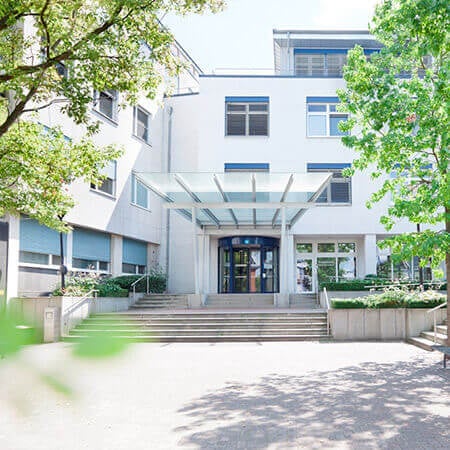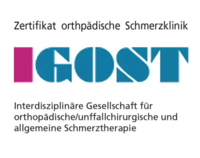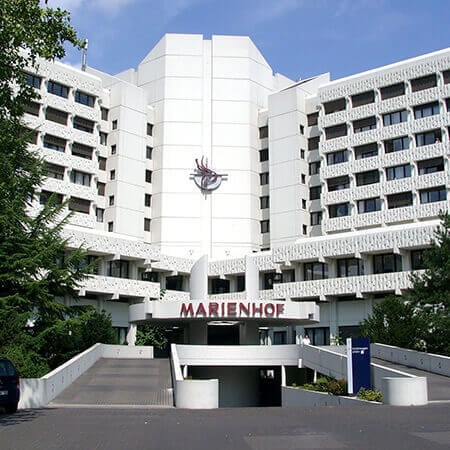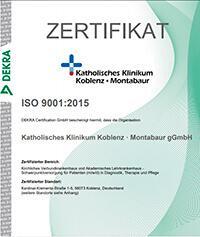Facet Syndrome — Facetectomy or Laminectomy: treatment in the Best Hospitals in the World
Treatment prices are regulated by national law of the corresponding countries, but can also include additional hospital coefficients. In order to receive the individual cost calculation, please send us the request and medical records.

Department of Spinal Surgery
The Department of Spinal Surgery annually treats more than 740 patients with facet syndrome. To improve the condition of the patients, doctors perform endoscopic resection of the facet joints or laminectomy. The surgery involves the use of a three-dimensional O-Arm x-ray system, which protects the spinal cord. The department is headed by Dr. med. A Bitter, who specializes in microsurgical spinal interventions.



Department of Spinal Surgery
The Department of Spinal Surgery at the Vivantes Auguste-Victoria Hospital all diseases of the spine - both conservatively and operatively. Patients with herniated intervertebral discs, displacement of vertebrae, stenosis of the spinal canal or back pain are treated here. In addition, specialists of the department have a unique experience in the field of complex reconstructive and revision surgeries, which are conducted to continue or correct the previous surgical treatment.


Department of Spinal Surgery
The Department of Spinal Surgery offers the full range of effective treatment methods in the area of its specialization. A highly qualified team of doctors is at the service of the department's patients, who have in their arsenal advanced conservative and surgical treatment methods for pathological changes in the spine. Spinal surgical procedures are performed in modern operating rooms, the technical equipment of which allows spinal surgeons to perfectly perform both major open surgery and sparing interventions: minimally invasive, endoscopic, and microsurgical. Surgical treatment is complemented by a carefully planned course of physiotherapy. This includes procedures such as therapeutic exercises, manual therapy, massage, osteopathic treatment, etc. The department's team of doctors consists of 10 highly qualified specialists who, together with experienced nursing staff, admit more than 1,300 inpatients annually. The medical facility is certified by the German Society for Spine Surgery (DWG) as a level II specialized center. The department's medical team makes every effort to provide each patient with optimal treatment in a pleasant and friendly atmosphere.



Facet syndrome is one of the most common causes of back and neck pain. The condition occurs due to degenerative processes in the facet joints. The cervical and lumbar spines are most commonly affected. The disease often develops in elderly people who have experienced an increased load on the spine during their lives because of sports or physical labor. The disease is characterized by bilateral pain and muscle spasm in the area of the affected segment of the spine. At the same time, radicular symptoms (pain and motor and sensory disorders in the areas innervated by the spinal nerves) are absent, which distinguishes facet syndrome from other degenerative spinal diseases.
Content
Who may need a facetectomy?
A facetectomy is not a first-choice method of treatment for patients with facet syndrome. Moreover, it is used extremely rarely, only in the most severe cases, when symptoms cannot be relieved in any other way, as well as when the facet syndrome is combined with other degenerative diseases. This is due to the fact that, during a facetectomy and a laminectomy, the treatment is traumatic and requires long-term rehabilitation.
Whenever possible, facet syndrome is treated without surgery. Pain in the lumbar spine can be relieved with medicines, physiotherapy, massage, and therapeutic exercises. Patients are advised to reduce their body weight. Exacerbations of the condition can be treated using blocks with local anesthetics and glucocorticoids. Doctors abroad also offer degenerative therapy that involves the injection of stem cells and platelet-rich plasma into the facet joint. Injections of hyaluronate and glucocorticoids may also be considered.
If conservative therapy does not work, you can undergo some minimally invasive procedures, such as laser or radiofrequency denervation, chemical lysis, or cryoneurolysis. These are procedures for the destruction of nerve endings that conduct pain impulses and cause the development of pain syndrome. They help eliminate pain for up to 12 months. The procedure can then be repeated. Furthermore, by that time, ongoing conservative treatment may yield some results. For example, a person will lose weight or strengthen the spinal muscles with therapeutic exercises, so the symptoms will disappear or significantly decrease even after the denervation has ended.
Treatment works in about 80% of cases. The remaining 20% of those treated do not receive a sufficient analgesic effect. Many of them suffer from concomitant degenerative diseases of the spine. In such cases, doctors resort to facetectomy and laminectomy treatments, which allow them to release the nerve roots of the spinal cord and eliminate symptoms.
How is a facetectomy performed?
A facetectomy is an open operation performed under general anesthesia. The surgical procedure is quite traumatic and requires a long recovery period.
When performing the operation, doctors remove the affected facet joint partially or completely. Patients with concomitant degenerative spinal diseases (disc herniation or spinal stenosis) also undergo a laminectomy of the spine. This is a surgical removal of vertebral arches to relieve pressure on the spinal cord.
After a facetectomy and a laminectomy of the spine, its stability is often disturbed. Diseases of adjacent segments of the spine may develop as well. Doctors perform rigid or dynamic stabilization of the spine to prevent this from happening.
Where to undergo your treatment?
If you suffer from facet syndrome that cannot be treated with conservative therapy and denervation, you can go abroad to have a facetectomy. On the Booking Health website, you can find out prices, compare the cost of treatment at different hospitals, and choose the option that suits you best based on the price. There are a few reasons for you to undergo your treatment abroad. These are the following:
- you will be operated on by neurosurgeons who are considered among the best in the world;
- hospitals abroad use state-of-the-art equipment;
- sparing operations;
- high-quality intraoperative diagnostics, which reduce the risk of complications;
- stabilization of the spine after a facetectomy will help to avoid diseases of adjacent segments of the spine;
- high-quality care after the operation and full-fledged rehabilitation.
You are welcome to make an appointment for your treatment abroad at the best price on the Booking Health website. The cost of operations and other procedures will be lower for you than if you contact the hospital directly. The price will be reduced due to the absence of taxes for foreign patients. The specialists from the Booking Health company will help you arrange your trip. They will help you apply for a visa, translate medical records, and book hotel and airline tickets. The company's employees will also meet you at the airport and take you to the hospital by car. After the completion of your treatment, our specialists will arrange your return transfer.
Authors:
The article was edited by medical experts, board-certified doctors Dr. Nadezhda Ivanisova and Dr. Vadim Zhiliuk. For the treatment of the conditions referred to in the article, you must consult a doctor; the information in the article is not intended for self-medication!
Sources:

